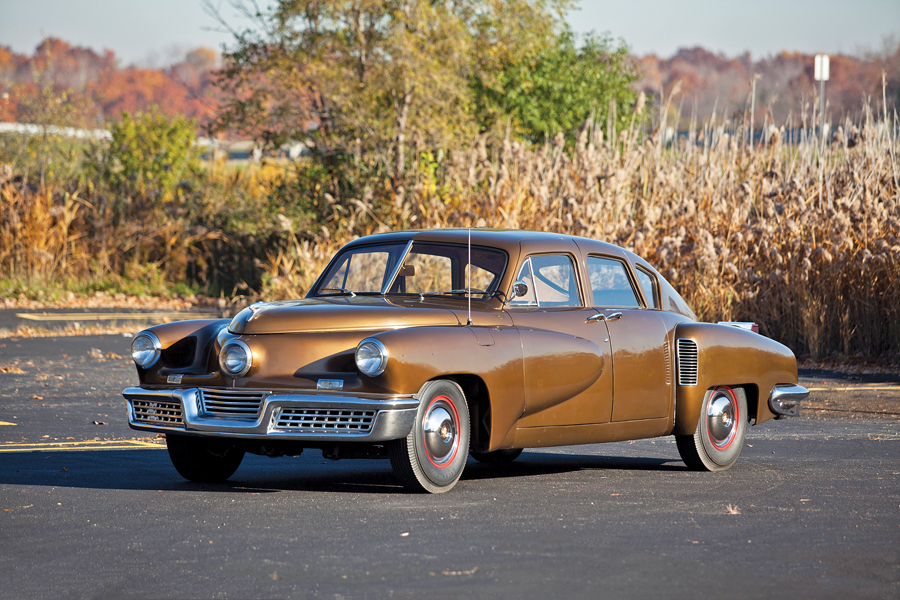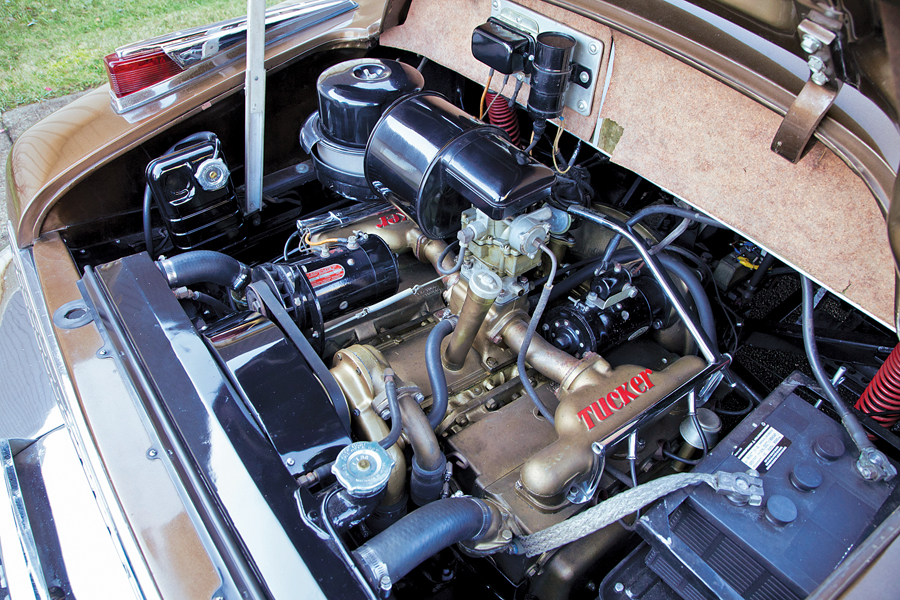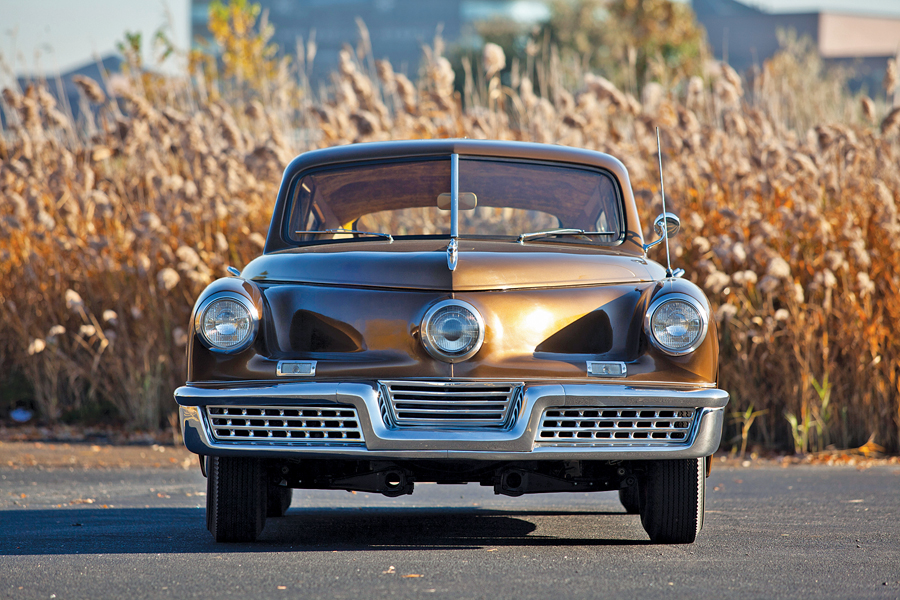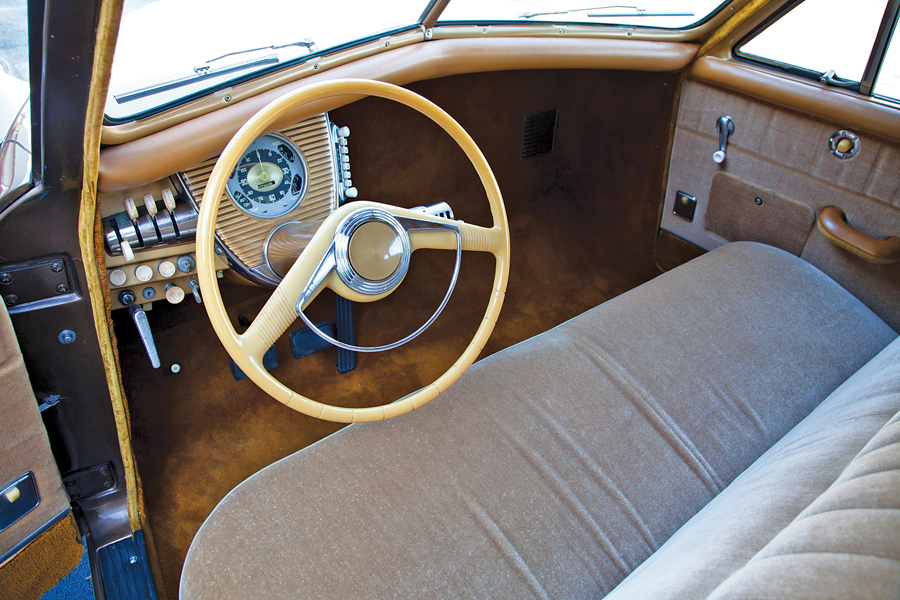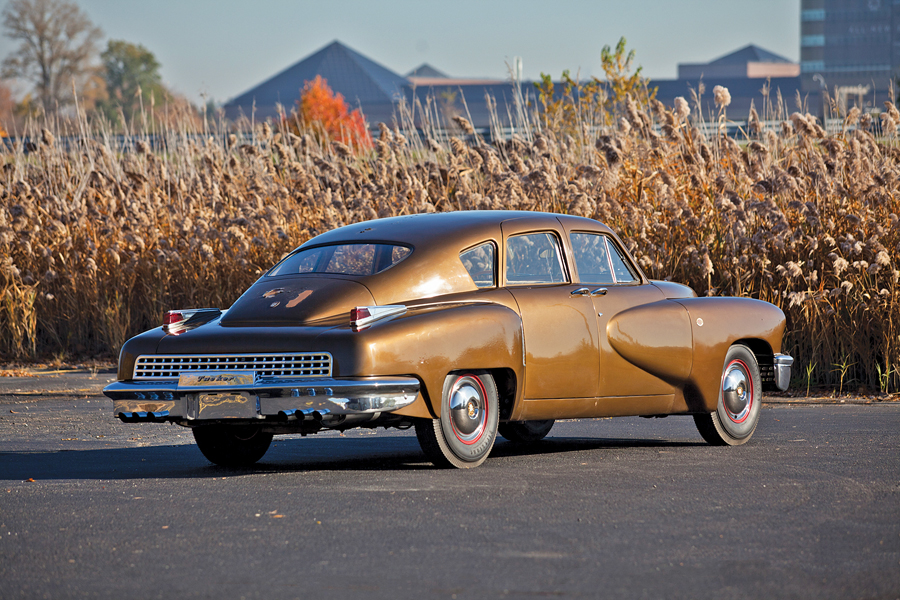SCM Analysis
Detailing
| Vehicle: | 1948 Tucker 48 |
| Years Produced: | 1948 |
| Number Produced: | 50, plus one prototype |
| Original List Price: | $2,450 |
| SCM Valuation: | $1,540,000 |
| Tune Up Cost: | $400 |
| Distributor Caps: | $120 |
| Chassis Number Location: | Data plate on firewall |
| Engine Number Location: | On the front of the bellhousing, stamped on the block |
| Club Info: | The Tucker Automobile Club of America |
| Website: | http://www.tuckerclub.org |
| Alternatives: | 1932 Bucciali TAV 12, 1933 Pierce-Arrow Silver Arrow, 1938 Phantom Corsair |
| Investment Grade: | A |
This car, Lot 160, sold for $1,347,500, including buyer’s premium, at RM Sotheby’s Arizona sale in Phoenix on January 19, 2017.
The 1988 Francis Ford Coppola film “Tucker: The Man and His Dream” made millions of viewers instant experts on the Tucker marque. Coppola took a few artistic liberties in the film, but then again, the government claimed Tucker took a few liberties in his financing.
Preston Thomas Tucker was eminently qualified in the automotive industry — a fact that the movie didn’t dwell on. With financing from Henry Ford, he built Indy race cars in 1935 and had industry experience at Studebaker and Dodge. He was an imposing, charismatic figure with the knack for raising capital — large amounts of capital. With that he developed his dream, “The Most Completely New Car in Fifty Years.”
The torpedo-shaped fastback sedan looked like “the car of the future,” and it was a stark contrast to the warmed-over pre-war designs in dealer showrooms at the time.
The Tucker 48 had a central “cyclops-eye” headlight that turned with the wheels, interchangeable front and rear seats to even out wear, doors that were cut into the roof to aid entry (an issue during a rainy day), and abundant safety features. It had recessed buttons and knobs, a pop-out windshield and a front “Safety Chamber” where front-seat passengers would be protected in case of an impending collision. Many of these features were incorporated into other production vehicles.
Only 50 cars were produced, along with the “Tin Goose” prototype, before that Securities and Exchange Commission descended on Tucker and six associates for irregularities in issuing $15 million in stock to finance additional production.
Conspiracy theories abound as to the SEC involvement. One was that Detroit automakers felt threatened, and they used their considerable influence with the SEC to launch an investigation of Tucker and his company. This theory has some merit, as all defendants were acquitted in 1950 and the jury stated it was a farce proceeding.
Tucker had the funding to continue, but the damage had been done. What was left of the Tucker empire was auctioned off at 18 cents on the dollar.
Not a neglected barn find
Our subject Tucker 48, number 1044, was, as suggested, the 44th car built, and it was included in the 1950 liquidation auction. The car was originally painted Andante Green, but it was quickly repainted red and was presented at the 1951 International Motor Show in Washington, D.C. At the time, it had been driven fewer than 3,000 miles.
In 1973 the Tucker was “restored” with a new Tucker motor and Cord transmission. It was also repainted in the current brown livery. In 1982, it was sold. After being driven only 15 miles, it was put to sleep in a barn, not to be seen for the next 34 years.
The term “barn find” is the most overused word in the collector hobby vocabulary. Most are really “neglect finds,” but Tucker 1044 was well preserved after its 34-year hibernation.
The only serious issue was paint that was peeling on the roof and trunk — thanks to improper preparation when it was repainted in 1973.
After rather routine servicing, our subject Tucker drove and performed as intended. However, it sold for $1,347,500 — well below other recent sales. There was no barn-find bonus here.
What happened? It may boil down to a boring color.
A brown bargain
In August of 2014, RM sold Tucker 1036 for $2,035,000 at their Monterey auction. It was originally also sold at the 1950 liquidation sale, and for many years it resided in the famed Pond Collection.
During the same Monterey 2014 weekend, Gooding sold Tucker 1003, which had once been part of a trade for a brothel, for $1,567,500.
The first and most obvious answer to 1044’s lower-than-expected sale price is “brown.” Brown is not a desirable color, and it rarely enhances the elegance of any car. However, that brown paint may have saved the buyer a lot of money.
There is no reason not to repair the roof and trunk paint damage, so why not repaint the car in a more attractive livery, perhaps even in the original shade of Andante Green? As such, the value of Tucker 1044 would be greatly enhanced — and this would prove to be a wise purchase indeed. ♦
(Introductory description courtesy of RM Sotheby’s.)
